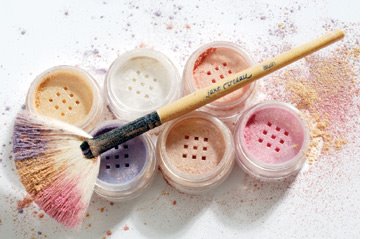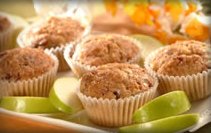Health researchers say “skinny sodas” and other products that reprogram our “sweet tooth” could revolutionize our taste buds and our waistlines. Here's the skinny on the new way to lose weight and stay healthy. - By Colette Bouchez  With spring in the air and summer just an AC blast away, millions of Americans will be swapping their hot mug of java for a icy blast of Coke – or Pepsi or 7UP or Mountain Dew. But for many – particularly women - guzzling down a season of sodas can mean more than a few extra pounds by summer's end. It could also mean some serious health consequences.
With spring in the air and summer just an AC blast away, millions of Americans will be swapping their hot mug of java for a icy blast of Coke – or Pepsi or 7UP or Mountain Dew. But for many – particularly women - guzzling down a season of sodas can mean more than a few extra pounds by summer's end. It could also mean some serious health consequences.
Indeed, according to a 20 year study of some 90, 000 women just published in the American Journal of Clinical Nutrition by the Harvard School of Public Health (HSPH), those gals who drink more than two servings a day of a high sugar beverage have up to a 40 percent increased risk of heart disease, when compared to those who drink less.
"Healthier beverage options would allow individuals to make better choices," stated Walter Willett, professor and chair of the HSPH’s Department of Nutrition.
Moreover, in a report issued earlier this week these same Harvard researchers cite cache of clinical research showing direct links between high sugar soda and fruit juice consumption to type 2 diabetes and the nation's growing obesity problem.
But the Harvard researchers are not content with simply pointing out what we are doing wrong. Willett and his group believe that one key to controlling both our bulging waistlines and our growing risk of diabetes and heart disease lies in reprogramming our national sweet tooth to be satisfied with less – and they are taking steps to help us do just that.
Putting significant pressure on the American Beverage Association, the doctors are calling for the creation of a new category of low-sugar beverages – drinks that still contain sugar, but much less.
“The aim is to re-educate the American palate to a lower expectation of sweetness, as well as to give consumers clear information to help them make healthier choices,” state Willett .
Part of the push also includes putting pressure on the FDA to change soda and fruit juice labeling requirements so that calorie counts reflect the whole can or bottle – and not just a single serving. This they say, is particularly important since most folks consume far more than a single serving at one time.
Typically, a 12 ounce can of soda contains between 10 and 12 teaspoons of sugar – about 48 grams of sugar or 4.2 grams per ounce. That translates into as much as 175 calories. The new guidelines call for no more than 1 gram of sugar per ounce - a reduction of nearly 75%. This is similar to what jelly and preserve makers Smuckers and Polaner voluntarily did a number of years ago when they introduced a line of “low sugar” preserves and jellies which contain about half the amount of sweetening as traditional versions.
Not surprisingly however, when it comes to soda, manufacturers may need legislation to make the change. The American Beverage Association responded to the Harvard research by citing data previously published in the Journal of the American Dietetic Association showing the national craving for “full calorie” soft drinks and fruit juice has gone down- not up, since 2006.
"The data shows that the American public is taking advantage of the many beverage innovations being developed by the beverage industry, including the introduction of of new no- and low-calorie beverages," she is crediting with saying in FoodQualityNews.com
While this may be true, still the Harvard researchers believe that swapping sugar for artificial sweeteners isn't the answer - mainly because it continues to stoke our appetite for sweet treats. Thus, the more we remain accustomed to eating something sweet, the more sweets we will ultimately need to fill our sweet tooth.
Juices Even High In Sugar
Now if you're thinking the way around all this is to simply swap soda for fruit juices – not so fast. While it's true that juices contain beneficial antioxidant vitamins and other phyto nutrients, research shows the sugar content of these drinks can be the same – or even higher than sodas – and in this way pretty much negate whatever nutritional protection you think you're getting.
In the research presented by HSPH, a single serving of a typical cranberry juice cocktail contains about 12 teaspoons of sugar ( or 48 grams per serving) while 100% grape juice contains a whopping 63 grams of sugar per serving – or 15 teaspoons ! Apple juice, which many Mom's frequently use to “quiet” their babies, may instead be creating a sweet tooth with 11 spoons of sugar per serving. Meanwhile, orange juice, America's “healthy “ breakfast beverage , contains about 10 spoons of sugar per serving – or 48 grams.
While some of the sugar in juices is admittedly natural – resulting from the fruit itself – still in concentrated form you're not only getting far more, but without benefit of the fiber found in the whole fruits ( which changes the way the sugar is metabolized) experts say you're getting a fattening sugar rush of calories, while priming your sweet tooth to crave more. And don't forget that many juices also add additional sugar or, worse still, high fructose corn syrup which has it's own set of possible health consequences.
How To Cut The Sugar – And Keep The Taste – Right Now!
While the Harvard group is hopeful their efforts will eventually lead to a change in not only manufacturing tenets, but also consumer taste buds – and cravings – if you don't want to wait for the beverage industry to get on board, here are some suggestions for cutting down the sugar in what you eat and drink now.
1.Dilute sodas and juices with lots of ice – or plain seltzer. Moms can turn one family size bottle of soda into two with the addition of a bottle of seltzer. As long as the fizz is there you might be surprised at how little your family notices the difference. If they do, try combining two-thirds of bottle of soda with one-third plain seltzer. And remember, dilute diet sodas as well – the key is to be satisfied with less sugar.
2.Cut down the sugar you add to your coffee or tea, dropping a ½ teaspoon every few weeks until you are down to a ½ teaspoon.
3.If you bake, reduce sugar by up to a half cup. To add bulk increase flour by a quarter cup.
4.Buy smaller glasses. Seriously. In the 1940's, 50's and 60's, breakfast juice glasses were 4 ounces. Today they are 8 ounces. Cut back to 4 and eventually you'll be satisfied with less.
5.Trade up “fruit skins” and dried fruits for fresh or frozen fruits.
6.Buy canned fruit packed in water or “lite “ juices – then soak in plain water before serving.
7.Dilute ½ cup of ice cream with ¼ cup no fat plain yogurt. You can do the same with puddings if you do it right before serving.
You may also be interested in reading:
Eat This and Reduce Menopause Hot Flashes
New Smart Foods Reduce Blood Pressure, Improve Heart Health
Or to find more more health and beauty news from healthy lifestyle expert Colette Bouchez visit RedDressDiary.com.
In addition to US Copyright, the text of this RedDressDiary article is licensed under a Creative Commons Attribution-ShareAlike 3.0 License. All formatting and style elements of this page are not available under this license, and Colette Bouchez retains all rights in those elements.




































No comments:
Post a Comment